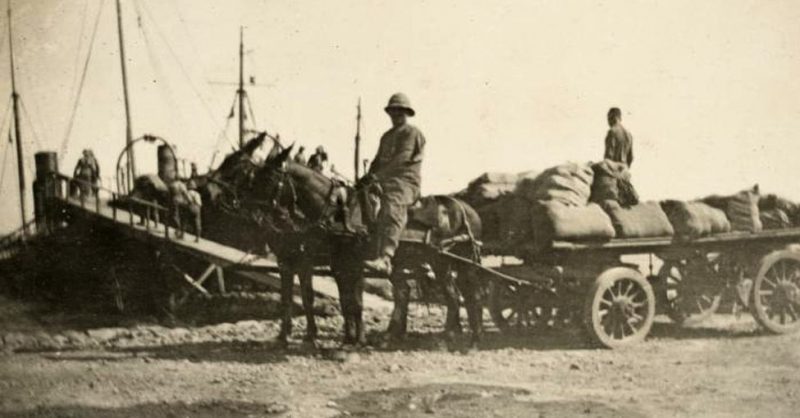The Missouri Historical Society is reminding history buffs, as the 100th anniversary of America’s involvement in the First World War approaches, that the state dispatched more than soldiers to Europe.
An extraordinary number of mules were sent to the front to pull materials and artillery to locations where neither horses nor machines could go.
Allied forces were heavily dependent on mules and horses since technology had not yet quite caught up with the war effort.
This ongoing demand for livestock by the Allied armies made the sale of mules and horses one of Missouri’s greatest contributions to the war effort, the historical society points out.
Germany in 1914 had four million horses and mules. France and England together could only assemble six million. America had 25 million, and Missouri had the largest number of all the States.
Sturdy and nimble, mules carried weighty loads for lengthy distances and their surefootedness became the stuff of legend. As with soldiers, animals endured grim privations during wartime. However, mules recovered from strenuous exertions speedily and could survive eating vegetation when hay and grain weren’t available.
In the last year of the war, one Missouri business, Guyton and Harrington, had become the biggest mule dealership internationally with 18 buildings situated on 4,700 acres of land and employed 150 men caring for up to 50,000 mules.
That farm sold 180,000 mules to the British army in the four-year period from 1914-1918.
When the American Expeditionary Force participated in the Meuse-Argonne offensive, the final offensive of the war in 1917, Americans had close to 90,000 mules working alongside soldiers. Gen. John J. Pershing, a Missouri native, requested more.
Local century farmer and writer Walter Schlemper, who grew up farming with mules, said they should be acknowledged for their service during the war.
Mules remain calm under fire, unlike horses. They could go where horses couldn’t because of their steadiness on the ground, emissourian.com reported.
Missouri’s location partially contributed to the high sales numbers, he said. The Santa Fe Trail, in addition to others, began in the state. So mules were highly sought after for the move West. Thousands of mules were traded and sold daily.
